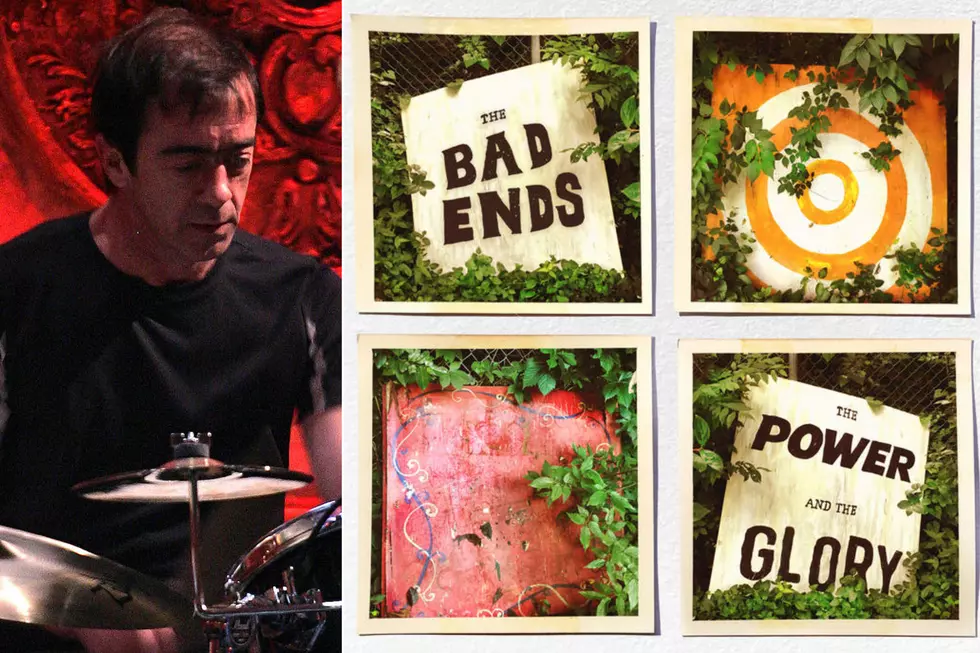
How R.E.M. Mixed Dreams, TV and Politics on ‘It’s the End of the World as We Know It’
“It’s the End of the World as We Know It (And I Feel Fine)” might be great, but it didn’t start with an earthquake, birds and snakes or an aeroplane.
The genesis of a song best suited for the book of Revelation was a party that the members of R.E.M. attended just as the band was forming in 1980. Peter Buck and Michael Stipe took a trip to New York City and ended up at an after-show party attended by rock writer Lester Bangs.
“I had read all of Lester Bangs’ stuff in Creem and thought he was the greatest thing in the world,” Buck recalled in the ’90s. “Now here we were at this party, filling up on birthday cake and jelly beans. Lester was standing there, and every time someone walked by – it was like a mantra – he’d have something to say to them. He called me a rotten c---sucker. ... I was like: ‘That’s Lester Bangs! That’s so cool!’”
Meanwhile, the man who was soon to become R.E.M.’s singer was so hungry that he chowed down on the only food available at the shindig: birthday cake and jelly beans. The event stuck in Stipe’s subconscious and would later become a particularly memorable dream.
“There’s a part in ‘It’s the End of the World as We Know It’ that came from a dream where I was at Lester Bangs’ birthday party and I was the only person there whose initials weren’t L.B.,” Stipe told Q in 1992. “So there was Lenny Bruce, Leonid Brezhnev, Leonard Bernstein... So that ended up in the song along with a lot of stuff I’d seen when I was flipping TV channels. It’s a collection of streams of consciousness.”
It’s an approach that R.E.M.’s primary lyricist, partially inspired by Bob Dylan’s ”Subterranean Homesick Blues,” had played with before – specifically with the song “PSA” that was left unfinished during the sessions for 1986’s Lifes Rich Pageant. In 2003, that song was completed and released as “Bad Day,” which drew some adverse reactions for its similarity to “It’s the End of the World as We Know It,” despite its role in that song’s creation.
OK, so a weird party, a weirder dream, an aborted song and Dylan were all part of the whirlwind of components to R.E.M.’s apocalyptic ditty, as well as the musical template that guitarist Buck, bassist Mike Mills and drummer Bill Berry had concocted. By the time the band was working on its fifth LP, a working order had been established. First, Berry, Buck and Mills would come up with instrumental ideas for new song possibilities, then Stipe would do his part in assigning words to the sounds that he gravitated towards.
“I wrote the words to ‘End of the World’ as I sung it,” the singer told Melody Maker in 1987. “When they showed me that song in the studio I just said, ‘It’s the end of the world as we know it and I feel fine.’ I wanted it to be the most bombastic vocal that I could possibly muster. Something that would completely overwhelm you and drip off your shoulders and stick in your hair like bubblegum.”
The story goes that the other guys headed off to grab some dinner while Stipe furiously completed the song’s lyrics. He would admit that the rapid-fire assemblage of names, calamities and allusions was inspired by his attraction and revulsion to television, which he described as “horrifying.”
More than one observer would note that listening to this explosion of apparent non-sequiturs was like flipping through the channels at light speed.
In flipping through those channels in his brain, Stipe inevitably ended up making quick-hit references to the news of the day, from environmental concerns (“Slash and burn”) and the Cold War (“A tournament of lies”) to Iran-Contra (“A government for hire”) and TV evangelists (“Tell me with the Rapture and the reverend in the right, right”), much of it given the patina of death, destruction and the end of days. The singer's balance between attraction and revulsion to television would take root in the iconic title, as well as the chorus, of the song. “It’s the end of the world as we know it” shows recognition that the world isn’t in great shape, while “And I feel fine” displays an insouciance, perhaps aided by the distractions of TV.
Another layer was added after the boys returned from dinner to find the song nearly complete. When R.E.M. recorded the song, Mills sang – in his sighing backing vocal – “Time I had some time alone,” reflecting the opinion of an observer who doesn’t want to engage with the big issues but escape from them. The instrumental side enforced this overload of images and feelings, a virtual wind-up toy powered by Berry’s Gatling gun drum intro, Mills’ acrobatic bass and Buck’s weaving together of jangle, distortion and feedback.
When the song was completed, the R.E.M. guitarist remained uncertain that it should make the new album. But Buck was the lone holdout and he bowed to his three bandmates’ wishes to include the song on Document. As the record’s release approached, he remained conflicted on the issue.
Watch R.E.M.'s 'It's the End of the World as We Know It' Video
“'It’s the End of the World as We Know It' [is] either my favorite song on the record or my least favorite,” Buck told Rolling Stone. “I’m still deciding.”
Despite Buck’s opinion, R.E.M. put out the track as the second single from the album on Nov. 16, 1987, a couple of months after Document hit store shelves. It didn’t prove as massive a success as lead single “The One I Love” (which entered the Billboard Top 10), although it rose to No. 69, outperforming every R.E.M. single to date, except for “The One I Love.” A video directed by longtime collaborator Jim Herbert went into frequent rotation on MTV.
Long after “It’s the End of the World as We Know It” came and went from the American charts, it remained popular. A 1991 British re-release sent the song to No. 39 in the U.K. and the song began earning a greater and greater presence on modern pop and rock radio.
Watch Michael Stipe Join Stephen Colbert for an 'End of the World' Parody
Surging along with R.E.M.’s overall popularity (and the string of successes that continued with Green, Out of Time, Automatic for the People and Monster), the song turned into a pop culture staple – joked about in Tommy Boy in 1995 and parodied by Stephen Colbert (with some help from Stipe) in 2016. Politicians including Ted Cruz and Donald Trump, apparently unaware of many of the song’s implications, chose to play “It’s the End of the World as We Know It” at campaign rallies – and were promptly sent cease demands. Cover versions of the song have been done by artists as disparate as Bon Jovi, 311, Vic Chesnutt, No Doubt and Little Big Town.
And until R.E.M. disbanded in 2011, “It’s the End of the World as We Know It” was a near-bankable inclusion in the band’s concerts. It remains in the Top 5 of the group’s most-performed songs, having long taken root as the closer to R.E.M.’s live set or encore. It makes sense; after spitting out all those lyrics, Stipe probably needed a break.
Top 100 '80s Rock Albums
More From Ultimate Classic Rock










